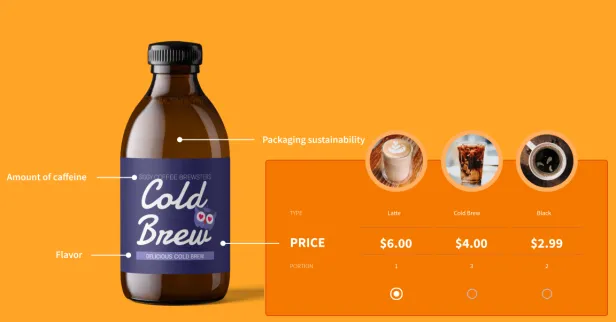In the world of survey design, embedded variables (EV) are a powerful tool that can significantly enhance the depth and precision of your data collection.
However, like any powerful tool, it requires careful handling and an understanding of its nuances to ensure optimal functionality. In this guide, we'll delve into key considerations and best practices to harness the full potential of embedded variables.
What are Embedded Variables and Why Are They Important?
Embedded variables (EV), also sometimes known as a “typing tool” or “segmentation tool”, allow you to set parameters that will automatically segment (or type) research respondents as they take your survey. You can think of EVs as a type of coding that groups your respondents based on their responses.
This is very useful for multiple reasons.
First, it saves you time on the backend by pre-segmenting your audience before the analysis process even begins. Making it easy to filter and compare different personas instantly.
It can also reduce potential bias and serve as a routing tool for respondents. For example, let’s say you need to screen a few ad concepts for an upcoming campaign. This campaign will be reaching a few target demos for you, you’d like to ensure that respondents only see the ad concept that is relevant to them. This means you’ll need to segment (or “type”) them in real-time.
Taking it a step further, let’s say one ad concept is geared towards a wellness-focused audience while the other is for an audience that regularly enjoys fast food.
While you could simply ask respondents to rate how healthy their eating habits are on a scale from 1-10, this is very likely to trigger social desirability bias.
What does this mean? It means that people will often over-report good behaviors and under-report the bad ones to look favorable. In this specific case, people may choose to rate their eating habits as much healthier than they actually are.
So how can you avoid this? And how would EVs help?
You could instead ask questions about the types of foods and restaurants your respondents eat at regularly. Using EVs you could ensure that those who reported eating organically, visiting restaurants like Sweetgreen, or exercising daily would be grouped and shown a wellness-focused concept. While those who regularly eat at restaurants like McDonalds and did not report movement/exercise as a part of their daily or weekly life would be shown a different concept that better aligns with their preferences.
Tips for Using Embedded Variables
Defining Your Variables
When defining options for embedded variables, it's crucial to ensure they are mutually exclusive. Overlapping definitions can compromise the effectiveness, leading to inaccurate data representation. A meticulous approach to option definitions sets the foundation for a well-functioning embedded variable.
Be Selective About the Variables You Include
Understand that not every option needs to be included in one of your variables. Selective inclusion is acceptable, and for options not covered, be diligent in setting the correct value to avoid discrepancies in data interpretation.
Avoid Deleting Options Post-Data Collection
If you have existing data, refrain from deleting options in an embedded variable or any multi-select. The system processes them based on order/position, not content. Rename unused options instead of deleting them to maintain data integrity.
Don’t Alter Your EVs After Data Collected Has Begun
Beware that altering conditions of embedded variables after data collection has begun won't retroactively update the embedded variable for previously collected data. Plan ahead and ensure your setup aligns with your analytical goals from the start.
Survey Sequence Matters
You can set up embedded variables anywhere in the survey as long as the necessary precursor questions are posed beforehand. This flexibility empowers you to structure your survey in a way that aligns with the logic of your research.
Consider Naming Your Leftover Options
When using an EV, the platform requires you to input an “Other Value” for those that may not fall into the categories you’ve laid out that you needed. Thinking about a fast food example, if you’re segmenting respondents based on their some people fit into the “Burgers and Fries” category and a “Chicken” category, there could be many more respondents who too fit in an “Other”. You have a choice to label those other options (ex: Coffee) or simply put “Other”.
